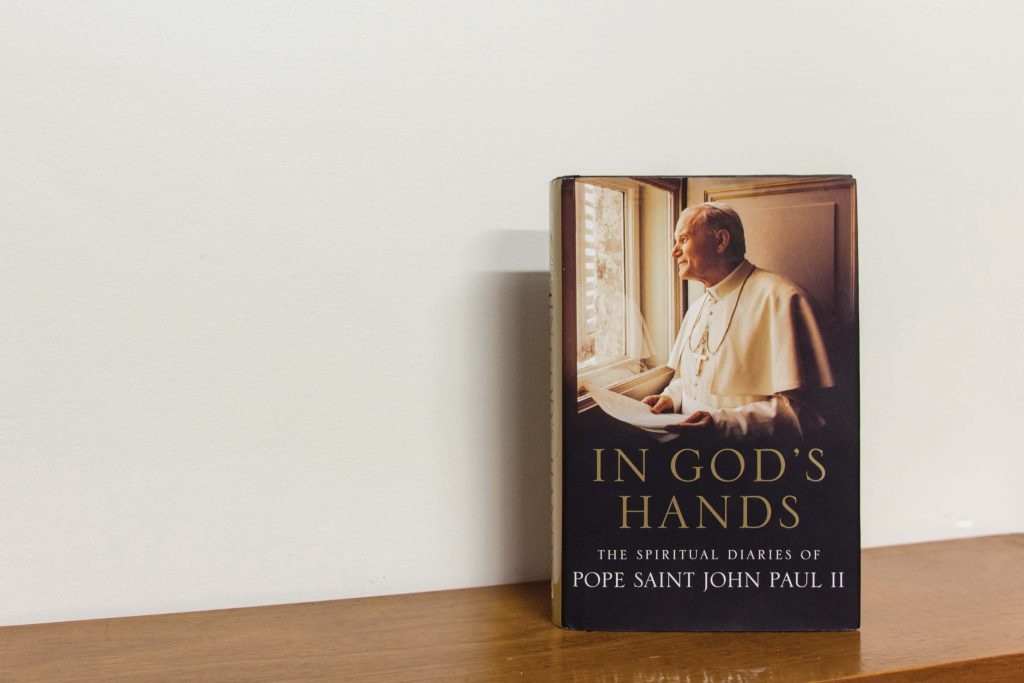
By Josh Low
In reading the recently released In God’s Hands: The Spiritual Diaries of John Paul II, it would be normal to question one’s worthiness in having the opportunity to gain such an insight into one of the greatest minds the Catholic Church has seen.
Initially published in Polish in 2014 and first published in English earlier this year, the contents of the diaries were collated from two notebooks, in which the now Saint John Paul II recorded his personal notes and reflections, related primarily to reflection days and retreats he attended.
It is clear to the reader that the entries were personal and written without an intention or thought for them to be shared, which has led to some controversy, especially due to John Paul II’s request for his notes to be burned after his death.
In the foreword to the book, former personal secretary to Pope John Paul II, Cardinal Dziwisz, expressed his reason for not destroying the diaries, stating that they held the key to understanding his private spiritual life.
With scanned copies of the original writings from John Paul II’s diaries, the reader sees the actual writings of the Saint and how his handwriting changes toward his final years marred by illness.
The diaries begin July of 1962, during his tenure as Auxiliary Bishop of Krakow, until March in 2003, some two years before his death.
John Paul II draws from scripture, the works and examples of saints and popes of the past, along with events from the history of the Catholic Church.
The collection of diary entries have a thorough spiritual focus, without a specific narrative and no mention of current events or happenings within society.
What the reader gets an insight into is his own thought process and its depth, and the humility of this successor of St Peter.
The main themes running throughout the diaries focus on Christ as the centre of human life, with the need for mankind to always be turned towards the Father, which is both expressed clearly in writing and by the questions he raises.
There is also a great emphasis on the importance of an intimate relationship with the Virgin Mary, with John Paul II’s own apostolic motto, ‘Totus Tuus’, or in Latin, ‘Entirely Yours’ seen reflected several times throughout the diaries.
His personal devotion to Mary is conveyed to the reader, with its foundation based on the theological and spiritual approach of St Louis de Montfort.
Because the book is a collection of spiritual reflections that avoid a narrative, it should be read slowly to grasp its content and fully comprehend the nature of this great Saint of our time.
Whether as a member of the clergy, or a layperson, a view into the mind of Pope St John Paul II will most definitely provide some benefit to the reader’s own relationship with God.
Upon reading his spiritual diaries the reader may very well begin contemplating on the same questions which Pope St John Paul II asks, on whether or not he was doing enough for God.
“Do I love the word of God? Do I live by it? Do I serve it willingly?
“Do I serve the Holy Spirit that lives in the Church?” he asks.
“Do I proclaim the Gospel with complete conviction?”
From page 25 from Issue 8: ‘Aboriginal’ of The Record Magazine